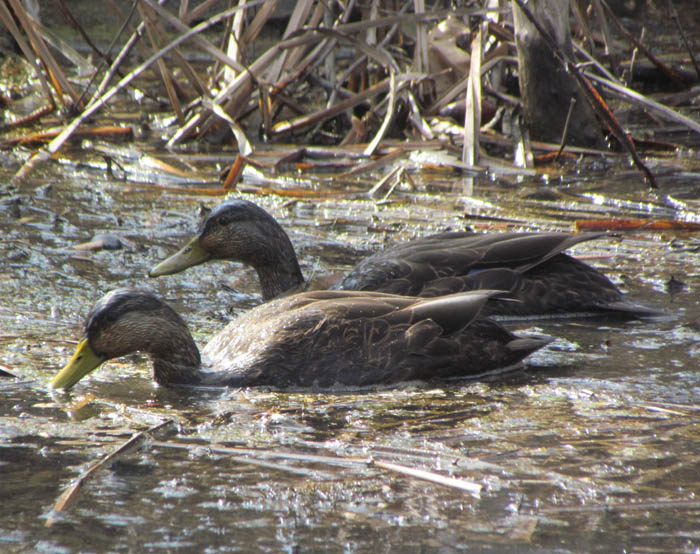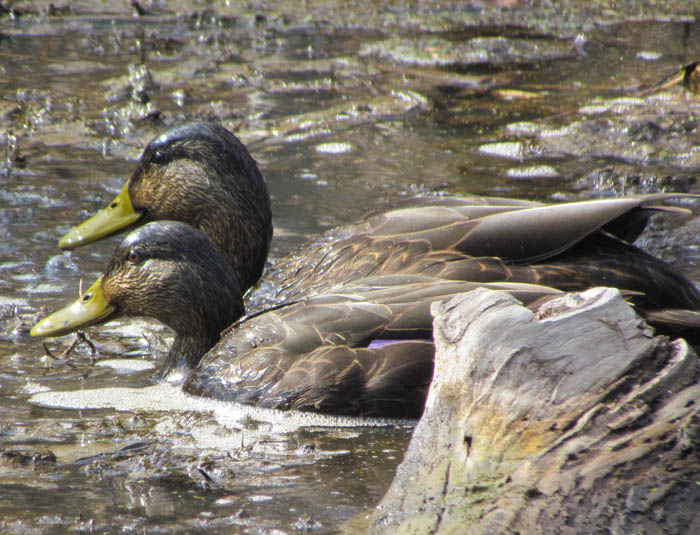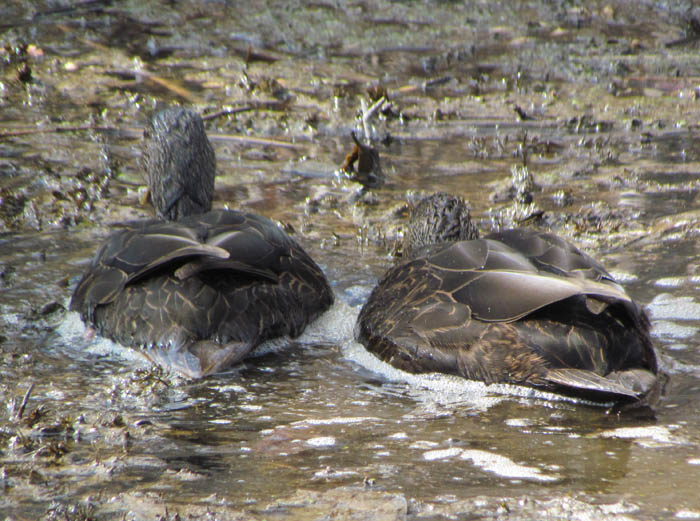The American black duck is not really black – it is more of a dusky brown. It blends in well and hides in plain sight in the shallow wetlands of the Cuyahoga River floodplain.
Male and female American Black Ducks are remarkably similar in appearance, which is unusual for waterfowl. These days they can be seen staking out nest sites in preparation for egg laying. The female usually selects an area in a clump of grass, under a shrub or tree.
Numbers of this duck declined sharply in the mid-twentieth century. Hunting regulations seem to have helped to stabilize their numbers, though the continental population of these birds is less than half of its historical size.
These ducks forage for food by dabbling; they tip their heads down and lift their tails up so they can probe the mud and water for submerged plants, seeds and invertebrates.
An average-sized clutch of 9 eggs hatch after just under a month of incubation. Ducklings appear in May and early June and are mobile within a few hours of hatching.
The American Black Duck is shy and is widely regarded as the wariest of all ducks. It is often seen in company of Mallards. If a mother is killed or separated from her brood, another American Black Duck with ducklings of her own, regardless of their age, will quickly adopt the orphans.






